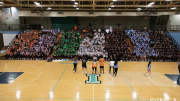At the start of the 2023-24 academic year, IMSA incorporated the Support and Engagement period (S&E) into its daily schedule. The Acronym talked to IMSA students and faculty to see what the general populous thinks regarding this new schedule.
As S&E is mainly focused on improving student life, let’s first take a look at the student body. The Acronym released a campus-wide survey in early September to gather some responses regarding the matter. Surprisingly enough, student feedback was mostly negative towards the new change – only a mere 15.6% expressed positivity regarding the new mod schedule. This was followed by another shocking statistic – only 12% of students thought they had enough time to eat lunch regularly. The general agreement regarding lunch was most likely what led to the overall negative responses. Respondent Mars Wylie (’24) stated that “[S&E] prevented me from getting through the lunch line, and I often have to throw out food while still hungry.” Wyatt Matthews (’24) furthers this point by saying “I have had to leave class when I still had questions just so I could ensure I was able to eat that day.” It is clear that the student body’s dislike towards the shortened midday and lunch period impacts their thoughts on S&E.
Positive reception can’t be overlooked, though. Ashwin Nair (’24) claims “I’ve already talked to teachers 4-5 times already… it’s nice to get some scheduled time instead of running around campus.” Faculty opinions were also generally positive. Ms. Amy Keck, Learning Strategies Coordinator, spoke to the historical data, stating “Students have expressed not having alignment for teacher meetings, and this assures that that roadblock doesn’t happen.” She furthers her point by saying “I’m seeing a growth in these sections across weeks.” Ms. Erin Micklo from the writing center also preferred the S&E period, specifically mentioning that “students are [at the Writing Center] every day for lots of reasons.” Student influx at these support areas serves as a positive effect of S&E since it enables students to get help during a dedicated time frame. Ms. Micklo explains how “intersession planning for groups have been able to meet” thanks to S&E. However, she did acknowledge the common concern of lunch being shortened, and stated that she hopes the inclusion of S&E in the future doesn’t take away from the students so harshly.
While a large portion of the student response so far has been negative, expressing concern about not having enough time to eat, there is some hope for the period providing students with benefits. Using the time to increase student productivity has been the leading positive factor with the change – especially in the opinion of the faculty. Most importantly, however, both parties agree that S&E isn’t perfect, and could do with some adjustments. IMSA’s administration can look forward to working with students and faculty to address these issues by taking community concerns into account.






Be the first to comment on "Support and Engagement’s Early Days at IMSA: Assessing Initial Reactions"